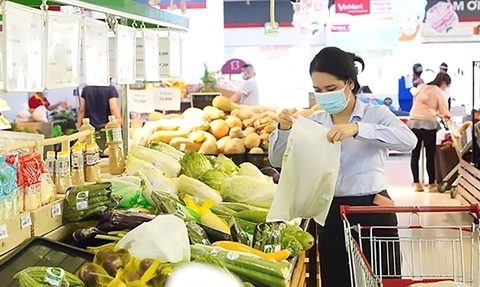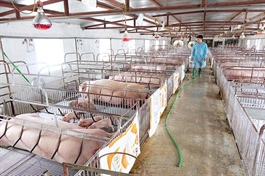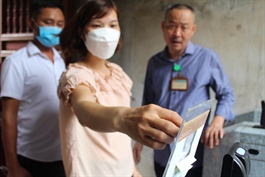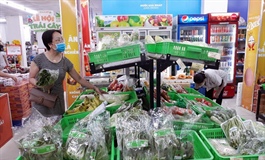Hanoi craftsmen's lives improved with modern materials and techniques
Hanoi craftsmen's lives improved with modern materials and techniques
The outlying district of Thuong Tin in Hanoi has set itself the goal of developing environmentally friendly handicraft villages, effectively exploiting handicraft tourism combined with cultural values.
In Hanoi's outskirt district of Thuong Tin, the lives of villagers in Tran Phu Village in Minh Cuong Commune have improved thanks dramatically to changes in traditional production methods as part of implementing the National Rural New Construction Program.

Rural workers are using machinery to make fishing nets. Photos: Trong Tung/The Hanoi Times |
Nguyen Thi Hue, 70, one of the village's first net weavers, said her family's workshop is the largest in the locality, and she used to earn little money from making fishing nets.
"But in recent years, we have developed the production of weaving various kinds of products, such as fishing hooks, nets, bird traps, and construction safety nets, creating jobs for dozens of workers with an increased income of between VND5 million and VND7 million ($211 and $296) a month," she told The Hanoi Times.
She added that she had applied advanced machines and equipment for the production process to achieve various products.
Pham Quang Vinh, who lives in the same village and has decades of professional experience, said using advanced machines can help him weave up to 500 nets a day instead of about 100 as in the old days.
"Not only does productivity increase, but the quality of fishing nets has been improved in terms of uniformity and diverse designs, satisfying the tastes of fishermen and people," Vinh told The Hanoi Times.
According to Dinh Thi Phuong, Secretary of the Party Committee of Tran Phu Village, the village has been recognized as a traditional craft village by the Hanoi People's Committee since 2012, with net fishing weaving.
She added that among more than 900 households, up to 90% of the families are involved in fishing net weaving. Among them, there are about 40 medium and large workshops, and the remaining households participate in one stage of the production process. Fishing tools are selling well, with many orders from coastal cities and provinces, including Haiphong, Nghe An, and Thanh Hoa.
In addition to traditional channels, the people of Tran Phu Village also sell products online. The village has 66 businesses selling goods through social media channels such as Zalo, Facebook, and Shopee.

Rural workers in Tran Phu Village earn a higher income than that in other villages. |
As a result, many large workshops, such as the households of Pham Quang Vien, Nguyen Van Long, and Vu Van Pha, earned millions of dollars annually. The per capita income of Tran Phu Village is about VND70 million ($296,000) per year, higher than the average income of the entire commune, according to Trinh Hung Son, chairman of the Minh Cuong Commune People's Committee.
"People's living standards have gradually improved over the years," he said.
He said that to improve products and meet market demands, many owners of production facilities need loans to invest in machinery and equipment, but it's uneasy about having access to credit due to complicated procedures.
"We have asked credit institutions to provide preferential loans to the owners of Tran Phu Village to help them realize technological innovation and product diversification," Son said.
Thuong Tin District aims to develop handicraft villages in an environmentally friendly direction, effectively exploiting handicraft tourism combined with cultural values. To achieve this goal, the local government has organized training courses for rural workers to manufacture high-quality products that are competitive in the market, Son said.
"With agricultural and rural tourism potential, we also plan to turn a Tran Phu Village into an attractive tourist destination for domestic and foreign visitors," the chairman of Minh Cuong Commune People's Committee told The Hanoi Times.
He added that it is also part of Hanoi's target for the 2022-2025 period that each locality will have at least one to three community-based tourism services and tourist attractions, with the participation of farmers, cooperatives, households, and businesses.























